Australia preview - expect the unexpected
After a winter of massive regulation changes, the 2014 FIA Formula One World Championship will burst into life this weekend with what promises to be a hugely unpredictable race in Australia.
Having shown great pace in pre-season testing, Mercedes and Williams enter the race in Melbourne as favourites, but the truth is that nobody knows for sure what to expect. The only certainty is that reliability is likely to play a huge part - and that doesn’t bode well for reigning world champions Red Bull, whose new RB10 machine has been plagued by technical woes...
Many teams believe that if you can finish what is often a punishing race in terms of brake reliability, then you will have a strong chance of scoring points.
“The Australian Grand Prix is always an exciting race and the fans are fantastic,” says Mercedes’ Lewis Hamilton.
“They love their motorsport, so it's an event that every driver looks forward to. I'm excited about the new season not just as a driver but as a fan. As a fan, you want to see overtaking throughout the field, you want to see different race winners, you want to see the championship go down to the wire... I hope that the changes for this year will make that happen. This is the year you need to watch Formula One!
“I think we're as ready as we can be for Melbourne and I'm more fired up than ever. With all the changes within the sport and the hard work that's been going on within the team, I believe this can be our year to really show what we're capable of. That’s not to take anything away from our opposition, who will be incredibly tough to beat as always, but I feel like I'm equipped with the tools I need to succeed. I can't wait to get started.”
Hamilton’s team mate Nico Rosberg, meanwhile, says: “Melbourne is a fantastic city and Australia is an exciting country all round. It's a great place to start the year and you can always have lots of fun here. The fans are incredibly friendly and laid-back but they are also very enthusiastic and mad about sport. I always fly in a week in advance to get over the jet lag.
“This year, after completing the final test in Bahrain, I returned to the factory at Brackley for final preparations in the simulator and went straight on to Melbourne from there. Overall, I think our winter testing programme went better than expected. Having said that, the first Grand Prix is the first real opportunity to judge how well we have done against our competition. Pre-season doesn't tell the full story, especially this year with the new regulations.”
Having switched from Ferrari to Williams, Felipe Massa believes he has a strong chance.
“I like the track and it's quite a challenging circuit,” says the Brazilian. “I am really looking forward to racing there this year and having a good start to the season with Williams Martini Racing.”
Much has been written about the need for drivers to adopt a new style, particularly to preserve their Pirelli tyres thanks to the huge rise in torque from the all-new turbocharged hybrid 1.6-litre V6 power units. Conserving fuel is another issue as the drivers will now start each race with only 100 kilograms (140 litres), flowed at the rate of 100 kg/hour by FIA-mandated regulators, as opposed to the 160 or so kilograms (225 litres) flowed at 170 kg/hour that they enjoyed in the previous V8 era.
But Ferrari’s Fernando Alonso, whose views are at variance with those of many of his rivals, believes that in reality little will change.
"I don't think it will be a big difference compared to the previous years, especially when Pirelli arrived in F1," he says.
"We have been managing the tyres a lot because of high degradation. Now we will manage the tyres, we will manage a little bit the batteries (in the Energy Recovery System or ERS) and the fuel consumption - but all in the same way. It will be hard to see on TV for the spectators when we are saving two or three tenths of a second, or even from the grandstand. If we save three tenths of a second on one lap, at one particular grandstand we save half of one tenth - so if someone can recognise when we are saving fuel they are quite expert!
"The acceleration and torque delivery from the power unit is a little bit different, the gear usage is a little bit different compared to the past and all these tools we have available this year, we need to maximise in a different way and need to learn a couple of things. But this is a motorsport competition. When the green light is on nothing will change in terms of adrenaline, overtakes, strategy, driver management, or tyre saving. Things will be very, very similar to last year when the green light is on."
Time will tell if the Spaniard is proved correct.
Pirelli have brought their new white-marked medium and yellow-marked soft compounds to Australia and they should suit the characteristics of what is essentially a street circuit. Like all of the tyres available this season they are slightly harder and more durable than their 2013 equivalents without compromising performance.
Owing to its non-permanent nature, the 5.303-kilometre (3.295 mile) Albert Park circuit offers generally low grip and is quite slippery, increasing wheelspin and thus creating a greater degree of tyre degradation. It is also tough on brakes with several heavy retardation areas where the deceleration peaks at 5g. It’s thus easy for a driver to lock up and risk flat-spotting worn tyres, and the effects of the new fly-by-wire rear braking systems (which help smooth out the harvesting of double the amount of kinetic energy produced under braking) have yet to be run in genuine racing conditions.
Pirelli motorsport director Paul Hembery says: “This is the most radical rules shake-up of the modern Formula One era, so we’ve had to create a completely different set of tyres for the brand new dynamics presented by the 2014 cars.
“Pre-season testing has shown just what a big challenge these new rules are for everybody, but we have worked very hard throughout last year and the winter to come up with an entirely fresh range of tyres specifically designed for these latest-generation cars, featuring new compounds and constructions that actually cut down on degradation while maintaining the same level of performance. As a result, we’re still expecting between two to three pit stops per car in Melbourne, although we’ll be able to make some more exact predictions after we see the cars run in free practice. The first race of the season is always unpredictable but this will be the case more than ever in 2014.”
There have been minimal changes to the layout of the track since the Formula One fraternity last visited Melbourne - the kerb at the exit of Turn 12 has been replaced, but that’s all. The DRS zones will be the same as in 2013 with the first beginning 762m before Turn 1 and the second 510m before Turn 3. Like last year, they share a detection point which is 13m before Turn 14.
The weather forecast suggests teams will get the chance to set up their cars up in dry conditions on Friday and Saturday, but rain is predicted for race day. The most anticipated Grand Prix in years will run over 58 laps or 307.574 kilometres (191.11 miles) and starts at 1700 hours local time (0600 GMT) on Sunday.
Next Up
Related Articles
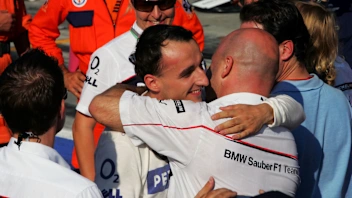 Sauber’s best moments and most memorable liveries in F1
Sauber’s best moments and most memorable liveries in F1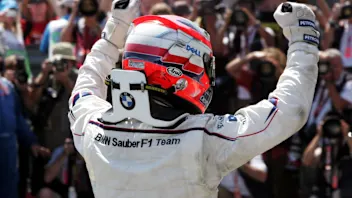 Tremayne'Why I’ll always have a soft spot for Sauber'
Tremayne'Why I’ll always have a soft spot for Sauber'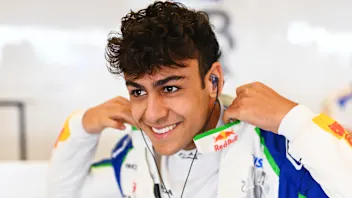 Lindblad's car number confirmed for rookie season
Lindblad's car number confirmed for rookie season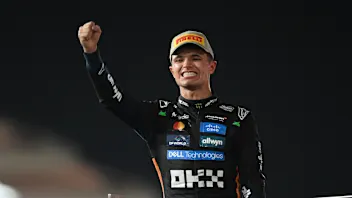 The elite group Norris joins as McLaren World Champion
The elite group Norris joins as McLaren World Champion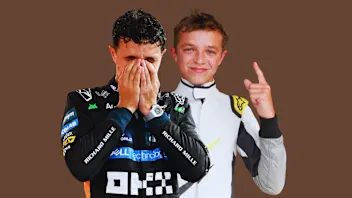 ExclusiveHow Norris made his school teachers ‘enormously proud’
ExclusiveHow Norris made his school teachers ‘enormously proud’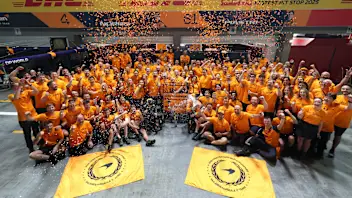 PalmerJolyon Palmer picks his stand-out performers in 2025
PalmerJolyon Palmer picks his stand-out performers in 2025